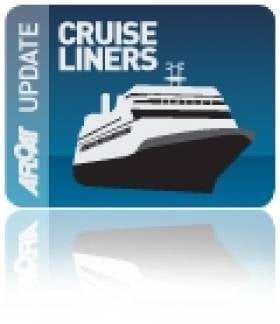Displaying items by tag: Cruise Liners news
#NewCruiseTerminal – The first purpose-built cruise terminal in Ireland is to be built in Belfast Harbour.
The £7m investment will ensure that Belfast Harbour will be able to handle all cruise ships operating in the Irish Sea, as well as next generation ships which carry over 4,500 passengers and crew, a harbour spokesman said.
According to a report in today's Belfast Telegraph, the new facility will also enable visitors to disembark within walking distance of the city's Titanic visitor attractions - Titanic's Dock & Pumphouse, Titanic Belfast visitor centre and SS Nomadic - by next year.
Roy Adair, Belfast Harbour's chief executive, said: "A decade ago hardly any cruise ships berthed in Belfast. Now, thanks to our Cruise Belfast partnership with Visit Belfast, considerable previous investment in our existing facilities for accommodating cruise ships and tourism attractions such as Titanic Belfast and the new Giant's Causeway Centre, Northern Ireland has a thriving cruise sector.
Cruiseship Calls to Dublin Includes Ship-to-Ship Refuelling
Some six hours previously Swan Hellenic's sleek Minerva (1996/12,500grt) picked up a pilot off Dalkey after sailing overnight from Portsmouth. She was followed astern by Saga Cruises Saga Ruby (1973/24,292grt) from Dover and likewise she too picked up a pilot close to the South Burford bouy. Incidentally Minerva had operated for Saga Cruises as their Saga Pearl but in recent years she has returned to her original name.
The classic lines of Saga Ruby are attributed to her combined ocean liner/cruiseship design when launched Vistafjord in 1973. The vessel was built by Swan Hunter Shipbuilders for Norwegian America Line. A decade later she was sold to Cunard Line who retained her original name until 1999 when she became the third Caronia. To read more about this former 'Cunarder' click HERE and how her interior looks now click HERE.
Dawn Princess departed Dublin this mid-afternoon bound for Cobh. Minerva is to due to leave around midnight while Saga Ruby remains overnight, in fact her call is particularly leisurely as she does set sail from the capital until tea-time tomorrow.
- Dublin Port
- Cobh
- Cruise Liners
- bunkers
- dalkey
- Princess Cruises
- Cobh Cruise Terminal
- Cruiseships
- Port of Dublin
- Ports and Shipping News
- Ocean Pier
- Cunard Line
- Cruiseliners
- Saga Cruises
- Saga Ruby
- Caronia
- Cruise Liners news
- Cruise ships
- Swan Hellenic Cruises
- Dawn Princess
- Minerva
- Refueling
- Dublin Cruiseships
- Dublin cruisecalls
- Saga Pearl
- Coastal tanker
- South Burford bouy
- Cunarder
Not One Not Two but Three Cruise Callers to Cork
Next in terms of tonnage is Holland America Line's near 60,000 tonnes Rotterdam, for more about the 1997 built click this LINK. The final member of the trio belongs to Saga Cruises subsidiary Spirit of Adventure cruises, the 10,000 tonnes Spirit of Adventure. For a visual virtual tour of the vessels interior facilities click HERE.
Spirit of Adventure was scheduled in late April on a 14-day 'Relics of Rome' cruise which was to include ports of call to Libya, Tunisia and Egypt but this was cancelled due to the political situation throughout North Africa.
The combined cruise calls to Cork Harbour has a potential capacity of 5,200 passengers and the mid-July arrival confirms the ports popularity which is to welcome this year a total of 54 cruiseships and over 100,000 passengers. Azura and Spirit of Adventure are to share the berth at Ringaskiddy while the Rotterdam is to berth at the dedicated cruise terminal in Cobh.


























































